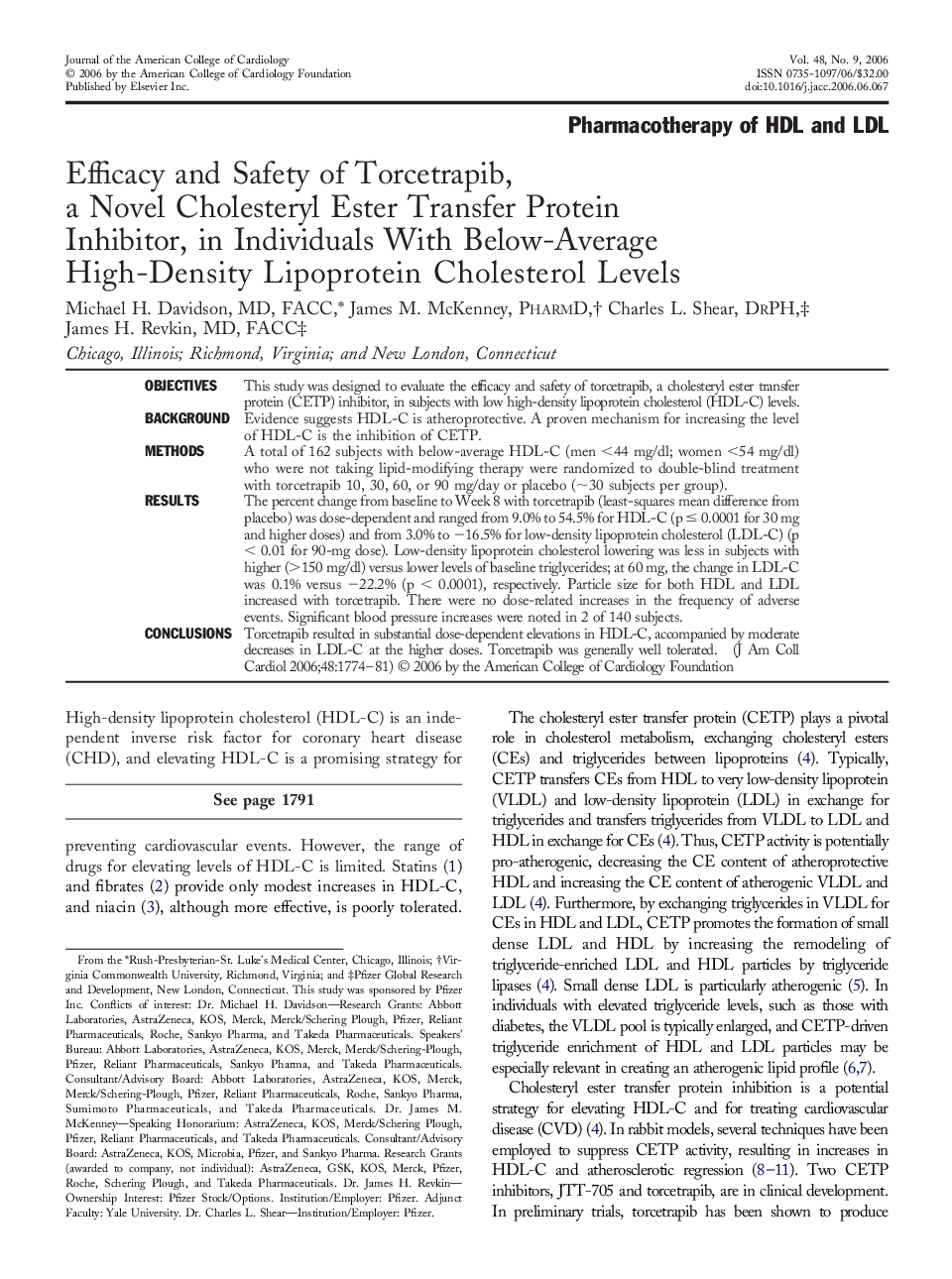| Article ID | Journal | Published Year | Pages | File Type |
|---|---|---|---|---|
| 2955326 | Journal of the American College of Cardiology | 2006 | 8 Pages |
ObjectivesThis study was designed to evaluate the efficacy and safety of torcetrapib, a cholesteryl ester transfer protein (CETP) inhibitor, in subjects with low high-density lipoprotein cholesterol (HDL-C) levels.BackgroundEvidence suggests HDL-C is atheroprotective. A proven mechanism for increasing the level of HDL-C is the inhibition of CETP.MethodsA total of 162 subjects with below-average HDL-C (men <44 mg/dl; women <54 mg/dl) who were not taking lipid-modifying therapy were randomized to double-blind treatment with torcetrapib 10, 30, 60, or 90 mg/day or placebo (∼30 subjects per group).ResultsThe percent change from baseline to Week 8 with torcetrapib (least-squares mean difference from placebo) was dose-dependent and ranged from 9.0% to 54.5% for HDL-C (p ≤ 0.0001 for 30 mg and higher doses) and from 3.0% to −16.5% for low-density lipoprotein cholesterol (LDL-C) (p < 0.01 for 90-mg dose). Low-density lipoprotein cholesterol lowering was less in subjects with higher (>150 mg/dl) versus lower levels of baseline triglycerides; at 60 mg, the change in LDL-C was 0.1% versus −22.2% (p < 0.0001), respectively. Particle size for both HDL and LDL increased with torcetrapib. There were no dose-related increases in the frequency of adverse events. Significant blood pressure increases were noted in 2 of 140 subjects.ConclusionsTorcetrapib resulted in substantial dose-dependent elevations in HDL-C, accompanied by moderate decreases in LDL-C at the higher doses. Torcetrapib was generally well tolerated.
